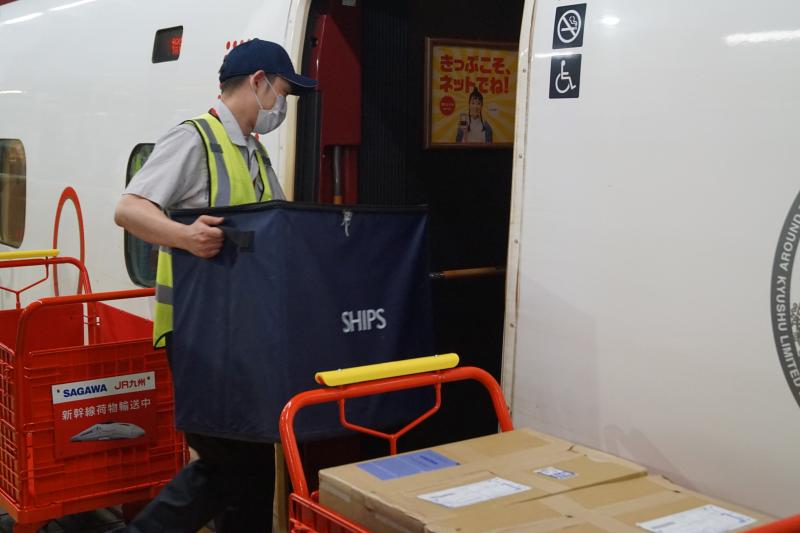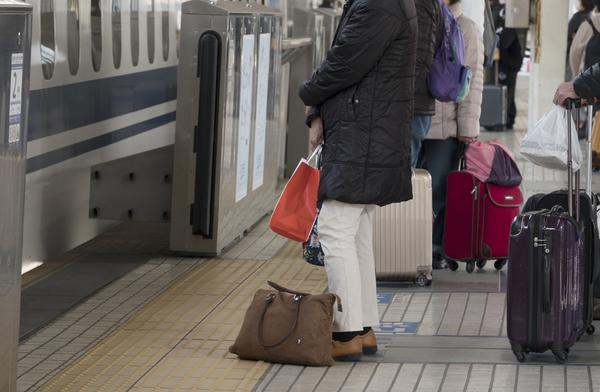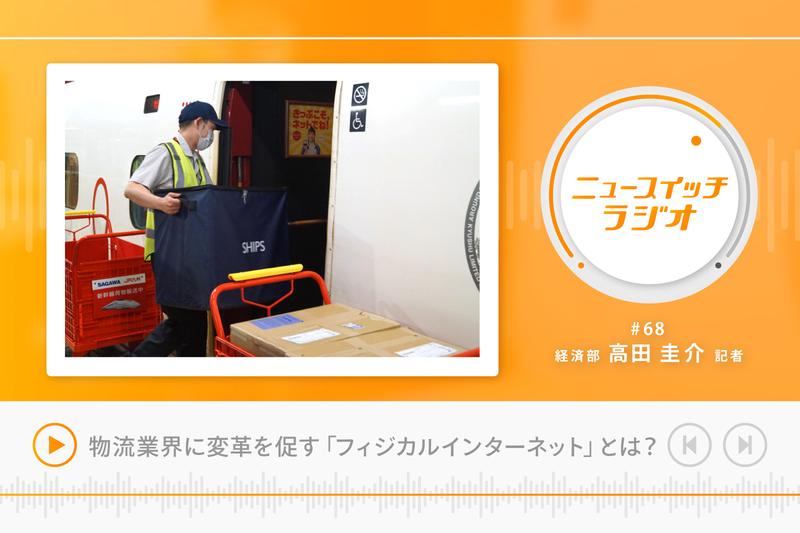Debate has begun to build a "Physical Internet = Refer to terminology" that the government shows as the future image of logistics. A new distribution system that applies the concept of Internet communication is expected to solve the problem of increasing transportation costs and the shortage of drivers. A stagnation in logistics could shake the foundations of people's lives and industries. Encourage the industry to transform in response to important issues such as decarbonization. (Keisuke Takada, Munehiro Kusaka)
An expert panel set up by the Ministry of Economy, Trade and Industry and the Ministry of Land, Infrastructure, Transport and Tourism in October warns that if the decline in drivers and the rise in logistics costs are left unchecked, a logistics crisis will occur in the latter half of the 2020s. Both ministries attribute the continued rise in costs to both supply and demand. While the transportation of a wide variety of products and small lots has led to the diversification of services, it has also become a factor in the decline in loading efficiency.
On the demand side, there is an increase in home delivery demand due to the spread of electronic commerce (EC). According to the Ministry of Economy, Trade and Industry, the size of the e-commerce market (product sales) in 2020 will grow by 21.7% from the previous year to 12,233.3 billion yen. Due to the influence of stay-at-home consumption due to the spread of the new coronavirus infection, sales are growing evenly across fields such as home appliances, clothing, food and beverages.
On the supply side, gradual deregulation has turned the tide in the logistics industry. As competition in the industry intensifies, the working environment for drivers deteriorates, and the number of new workers continues to decline. Some estimate that there will be a shortage of about 270,000 drivers in 2027. In fiscal 2024, regulations on overtime work will apply to the transportation industry, and from fiscal 2023, small and medium-sized companies will also be required to raise premium wages for drivers overtime. System reforms will further constrain management, and the industry is poised as a "2024 problem."
A meeting of experts from the Ministry of Economy, Trade and Industry and the Ministry of Land, Infrastructure, Transport and Tourism advocated a new logistics concept, the “Physical Internet,” as a breakthrough. In order to realize the physical Internet, the key is to change the mindset of shippers, such as manufacturers and retailers, as well as the efforts of logistics companies. "In Japan, they are only seen as cost centers," said an official of the Ministry of Economy, Trade and Industry.
On top of that, the government is emphasizing the linkage of logistics data across industry boundaries, from manufacturers to logistics and retailers. With logistics as a "collaborative area", we are aiming for thorough efficiency by linking sales plans, shipping plans, weather information, etc., in addition to physical standardization such as pallets and exteriors. We will build an internationally competitive distribution base, and we will eventually consider exporting as a system. The panel of experts will hold discussions toward the end of fiscal 2021 to formulate a roadmap to 2040.
Sprouts toward the realization of the physical Internet are beginning to emerge. Asahi Kasei and JR East's Mito branch office built a perishables distribution system using the railway network in August. Consolidated cargo and passenger transportation reduces costs and environmental impact while maintaining the freshness of fruits and vegetables. Fresh produce harvested in the morning in the Mito branch area can be sold in Tokyo in the afternoon.
JR Kyushu has started a mixed cargo and passenger business between Hakata and Kagoshima Chuo on the Kyushu Shinkansen. In addition to operating our own service to deliver luggage at the "Midori no Madoguchi" of both stations, we are collaborating with Sagawa Express. Allocate 5 flights up and down to the company's own business and 2 flights to the collaboration. Utilizing the space that was used as an in-car sales preparation room, it will lead to the creation of demand for perishables and express cargo delivered on the same day.

In the retail industry, in August 2020, three major convenience stores, Seven-Eleven Japan, FamilyMart, and Lawson, conducted a joint delivery experiment using the same truck for delivery to stores.
How we can promote cooperation across companies and industries is likely to be the touchstone for building a physical Internet.
A distribution center in Sagamihara City. A 25-meter class double-linked truck goes in and out there. The luggage compartment of the truck is precisely calculated based on the data, and the luggage is loaded without wasting space.
Next Logistics Japan (NLJ, Shinjuku-ku, Tokyo), a subsidiary of Hino Motors, is collaborating with transportation companies, logistics system developers, shipper companies, etc., and is conducting demonstration experiments aimed at creating an efficient arterial transportation system from the end of 2019. start. A double articulated truck connects the distribution center in Sagamihara City and Nishinomiya City, Hyogo Prefecture.
The theme of the demonstration experiment is to solve logistics issues such as labor shortages. We are working to maximize the loading rate by linking the logistics information of the transport side and the shipper side and mixing heavy and light loads. With the shortage of truck drivers, if the loading rate can be increased, the frequency of transportation can be reduced.
Conventional cargo handling relied on the "intuition, tricks, and experience" of the person in charge of the work. By grasping the necessary data, such as the shape of the packaging, one by one, we were able to simulate the ideal appearance of the cargo compartment of the truck. By accumulating detailed data, one year after the start of the demonstration, an average load factor of 56.9% and a maximum load factor of 87.2% were achieved. While the general loading rate is said to be around 40%, the results have been steady.
The president of NLJ, Yukio Umemura, said, "By accumulating data, we can see trends (for each type of package)." For example, it is possible to grasp which palette is most suitable for beverages.
However, in order to really use the data, it is necessary to do unrefined activities. There are many points for improvement before the data, such as the development of auxiliary jigs for stacking and devising methods of curing the cargo. President Umemura points out that in the future, it will be important not only for mainline transportation but also for branch lines as a whole.
The year 2021 was the year when the “Zagumi” was formed for the practical application of CASE (connected, automated driving, sharing, electrification) technology in the field of commercial vehicles. "Commercial Japan Partnership Technologies (CJPT)" was established jointly by Toyota Motor Corporation, Isuzu Motors Corporation, and Hino Motors for the purpose of improving transportation efficiency through new technology. Furthermore, in July, Suzuki and Daihatsu Motor, which handle light commercial vehicles, announced their participation in the CJPT.
Regarding data utilization, CJPT aims to build a data infrastructure that covers light commercial vehicles that are active in the "last one mile" before delivering packages from trucks to customers. If the data base is the same even for commercial vehicles of different manufacturers, the development of applications (applied software) that provide digital services will be highly effective. It is expected to be a big step toward solving logistics issues.
Nikkan Kogyo Shimbun December 6, 2021
COMMENT
The logistics industry, which has functioned as a lubricant for society, is in a dead end due to various factors such as people, goods, and money. On the 6th, the Fair Trade Commission announced the results of an investigation that it was suspected of violating the Antimonopoly Act over the move to free shipping on Rakuten Ichiba. In response to the situation that cannot be solved by the self-help efforts of the logistics industry, there will be more pressure to change the mindset that shippers and consumers have taken for granted through logistics services. On top of that, from the perspective of maintaining corporate competitiveness, the trend from ownership to sharing in logistics will inevitably be questioned in the process of realizing the physical Internet.






![[New Toyota Voxy (90 series)] Amplifies the characteristics of the aero body! A design that further enhances the power of the front mask! #Works direct custom deep layer 001](https://website-google-hk.oss-cn-hongkong.aliyuncs.com/drawing/article_results_9/2022/3/25/01568e2fbf021c0eaf7d013507c850a4_0.jpeg)

![[Toyota Noah / Voxy new model] Modellista releases various customized parts ... Actual vehicle exhibited at Tokyo Auto Salon](https://website-google-hk.oss-cn-hongkong.aliyuncs.com/drawing/article_results_9/2022/3/25/8268612c1e5941e62d3dfd07f8991b2f_0.jpeg)
